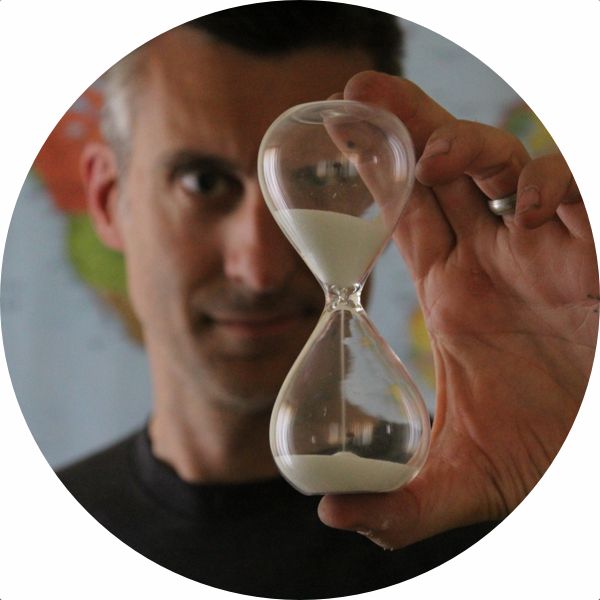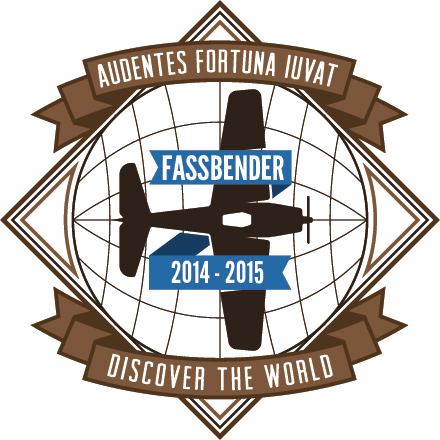Monday, 20-04-2015 — Sunday, 26-04-2015.
Day 243 — Day 249.
We were planning on visiting Crete, and, during our research, we found a place (St. George's Retreat Village — recommended) that would give us a free rental car if we stayed there for a week. With a hectic schedule through Europe in front of us, a week of downtime — with a free car — sounded great to us!
The rental agency representative was waiting for us when we got off the plane, and after a little paperwork (side note: you need an international driving permit for Crete), we stashed all of our stuff into our Volkswagen Up! (it was a tight fit) and sped off toward our villa just above the small town of Kokkino Chorio, a 45-minute drive from the airport at Chania.
Volkswagen Up!
As we approached our villa on the narrow winding roads, we encountered a little trouble getting to our villa — a flock of sheep coming down the road straight at us.
Sheep! On the road!
It was a pretty surreal moment, but it was also pretty fantastic. If you’re wondering what having a flock of sheep run by your car on a narrow island road is like, it’s a lot like this:
They were really close — if we had the inclination, we could have pet the sheep as they went by. After the flock passed us, we got a nod of thanks from the shepherd, then we continued on our way. By the time we got to the villa, the sun was going down. But the next morning we woke up to this:
A view from the hills above Kokkino Chorio
We didn't really do much during our week here on the island. We did check out some of the small towns, like Almyrida, Plaka, and Kokkino Choria. One day we drove all the way to the big town of Chania to go to a reasonably priced grocery store.
And any time we went down the hill, we drove by a group of Dumpsters near Kokkino Chorio that functioned as the local stray cat gathering spot. There are a lot of stray cats on Crete — at least they look like stray cats. We even saw one that only had three legs (it’s the white one in the picture below).
Cretan cat conference.
We spent a little time on the beaches of Almyrida. The water at the beaches was really clear, and in the distance it is brilliant shade of blue. if you’ve ever seen something described as “Aegean Blue,” this is what it’s referring to.
The beach at Almyrida.
One day we walked the short distance up the hill behind our villa (there's a taverna there, but it’s only open on the weekends and only for limited hours; we never got the chance to eat there) and we found a small church dedicated to Agios Georgios (St. George, naturally) that is said to be featured in Zorba the Greek.
I haven’t seen the movie myself, so I can't say it that’s true or not. But I can tell you that behind the church, right in the side of the hill, there’s a spooky cave.
Small Cretan church in the hills.
One sunny afternoon we ventured inside this cave. It was very dark (it’s wired for lights, but they weren’t on), and inside we found some crypts along with plenty of sheep dung on the ground. We didn’t have any torches with us, so we didn’t investigate too far. But it was still mighty spooky.
We found out later it was part of the complex of caves the German Nazi forces used for artillery spotting to control Souda Bay below — a dark chapter in Kokkino Chorio’s history.
Palace at Knossos
We decided to take one day and drive over to the Palace at Knossos. I studied this place in college, but I don’t remember much about it, other than, according to Greek legends, it was where King Minos had Daedalus build the famous labyrinth to keep the minotaur (who was really the king's son).
So I was looking forward to visiting the place, even if it was a good hour-and-a-half drive from where we were staying. We had a free rental car, after all, so why not?
The palace at Knossos: Bull reconstruction.
A gent named Arthur Evans is credited for finding the place in 1900 (even though it was first found by a Greek fellow by the name of Minos ... coincidence?).
Evans pulled many of his hypotheses about the history of the site straight out of Greek mythology. He thought the place looked like a labyrinth, so he decided it was the palace at Knossos where the Minotaur was kept, just like in the stories.
Evans and his crew spent the next 35 years excavating and restoring the palace according to Evans’s increasingly strange hypotheses about the place and what functions each of the rooms served. And, conveniently, all the reconstructions done under his supervision bolstered his hypotheses.
Um, this seems dubious.
I'm no archaeologist, but we’ve been in plenty of tombs, temples, ruins, and churches on this trip to think that Arthur Evans was pretty much wrong about a lot of his interpretations.
Call me skeptical, but I’m pretty sure this reconstruction — which permanently changed the existing site to match Evans’s vision — isn’t quite traditional. Even the museum shop boasts “authentic copies.”
There’s a reason this place has not been inscribed in the list of UNESCO World Heritage Sites.
So while I’m glad we went to check it out, I can’t say it was worth the time we spent in the car or the price of admission. We did see a nice peacock, though.
Cretan peacock at Knossos.
We spent the rest of our time on Crete kicking back and doing almost nothing, except for eating some nice authentic meals (fava bean pureé is really good). It was a nice bit of relaxation we got to enjoy before we’d be entering the next section of our trip — which was going to be something of a whirlwind tour of Europe.
Small chapel on a hill looking over Alymrida.
But the short version is, if you really want to know what our week on Crete was like, it was a lot like this:
Mythology
by Edith Hamilton
Read the thrilling story of King Minos, the Minotaur, and his battle with the brave Theseus (that guy from Athens), plus a lot more myths and legends that were formed right here in Greece.

Tom Fassbender is a writer of things with a strong adventurous streak. He also drinks coffee.















